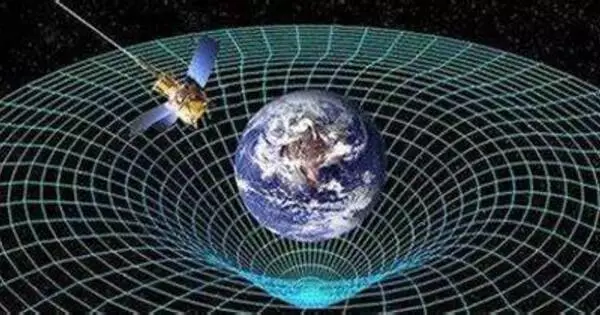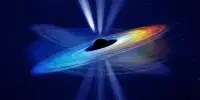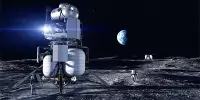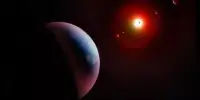Testing Albert Einstein and Leonhard Euler’s theories at the edge of the cosmos is an intriguing idea, but it’s crucial to remember that our current understanding of physics and cosmology has certain limitations when it comes to investigating the very edge of the universe.
The universe is a one-of-a-kind laboratory for testing physics laws, particularly those of Euler and Einstein. Euler explained the movements of heavenly objects, while Einstein demonstrated how celestial things warp the Universe. Since the discovery of dark matter and the acceleration of the expansion of the Universe, the validity of their equations has been put to the test: can they explain these unexplained phenomena?
A team from the University of Geneva (UNIGE) has developed the first method to find out. It considers a never-before-used measure: time distortion. The results are published in Nature Astronomy.
Our method will be integrated into these different missions. This is already the case for DESI, with whom we have become external collaborators thanks to this research.
Camille Bonvin
The theories of Leonhard Euler (1707–1783) and Albert Einstein (1879–1955) revolutionized our knowledge of the Universe. Euler’s renowned equation, which bears his name, provided physicists with a valuable tool for calculating the movements of galaxies in the Universe. Einstein’s theory of general relativity proved that the Universe is not a static framework, but may be deformed by star clusters and galaxies.
Physicists have tested these equations in a variety of ways, all of which have been effective thus far. However, two discoveries continue to put these ideas to the test: the acceleration of the Universe’s expansion and the discovery of invisible dark matter, which is considered to account for 85% of all matter in the universe. Do these mysterious phenomena still obey the equations of Einstein and Euler? Researchers are still unable to answer this question.
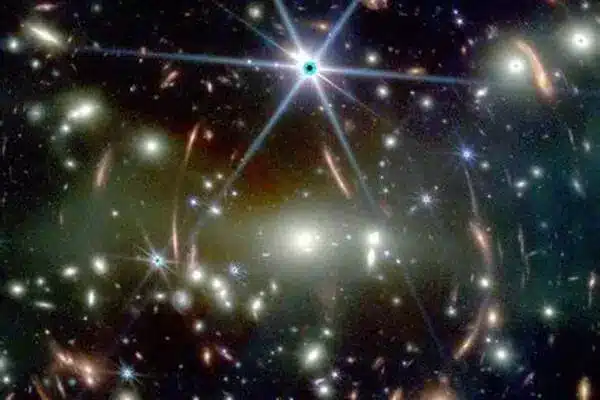
The missing ingredient
“The problem is that current cosmological data do not distinguish between theories that break Einstein’s equations and those that break Euler’s equations.” This is what our research shows. We also provide a mathematical solution for fixing this problem. “This is the result of ten years of research,” explains Camille Bonvin, associate professor in the Department of Theoretical Physics in the UNIGE Faculty of Science and the study’s first author.
Researchers were unable to distinguish between the correctness of these two equations at the very end of the Universe because they were missing a “ingredient”: the measurement of temporal distortion. “Until then, we only knew how to measure the speed of celestial objects and the sum of the distortion of time and space. We have developed a method for accessing this additional measurement, and it’s a first,” says Camille Bonvin.
If the time distortion is not equal to the total of time and space – i.e. the outcome obtained by the theory of general relativity – Einstein’s model does not function. If the temporal distortion does not correlate to the speed of the galaxies predicted by the Euler equation, the latter is invalid. “This will allow us to discover whether new forces or matter exist in the Universe that contradict these two theories,” adds Levon Pogosian, professor in the Department of Physics at Simon Fraser University in Canada and co-author of the work.
Reality check
These findings will be critical to numerous missions aimed at determining the origin of the Universe’s accelerated expansion and the nature of dark matter. These include the EUCLID space telescope, which will be deployed in July 2023 by the European Space Agency (ESA) in conjunction with the UNIGE, and the Dark Energy Spectroscopic Instrument (DESI), which began its 5-year mission in Arizona in 2021. There is also the international SKA (Square Kilometre Array) big radio telescope project in South Africa and Australia, which will begin observations in 2028/29.
“Our method will be integrated into these different missions. This is already the case for DESI, whom we have become external collaborators thanks to this research,” Camille Bonvin enthuses. The research team has successfully tested its model on synthetic catalogues of galaxies. The next stage will involve testing it using the first data supplied by DESI, as well as identifying the obstacles and minimizing the systematic features that could hamper its application.
